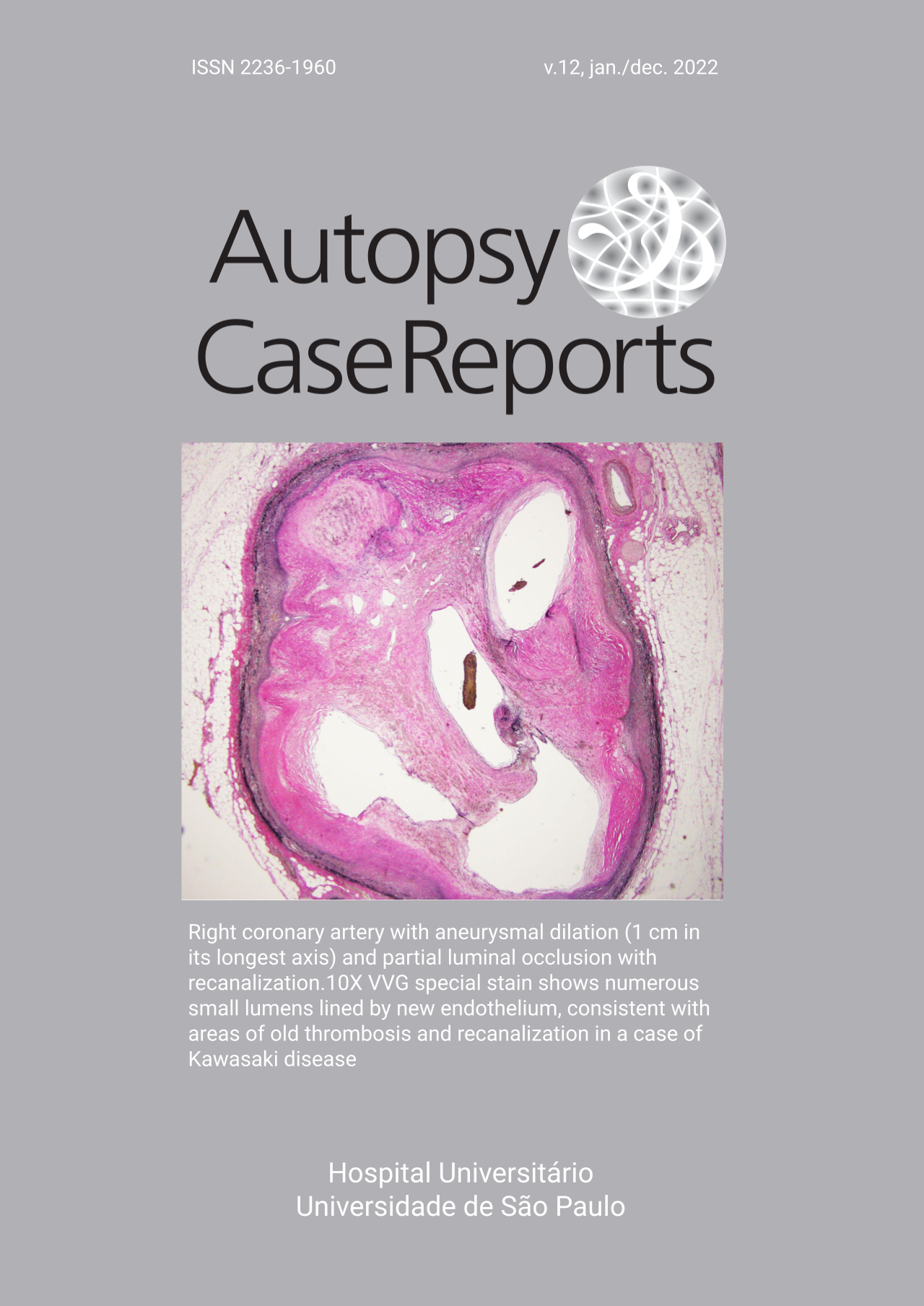The hospital autopsy: the importance in keeping autopsy an option
DOI:
https://doi.org/10.4322/acr.2021.333Keywords:
Autopsy, COVID-19, SARS-CoV-2Abstract
Autopsy has been one of the most powerful diagnostic tools in medicine for over a century. Despite its importance in establishing cause of death and elucidating pathophysiology of disease, rates of hospital autopsies continue to decline. In this study we aim to determine if physicians believe autopsies are essential to patient care through discussion of autopsy with families. At the same time, we analyzed whether families are more willing to consent to autopsy if physicians are involved in autopsy discussion at the time of death, and what may be the reasons for not wanting an autopsy. Our results showed a doubling in autopsy consent when autopsy was discussed by the physician. Additionally, the biggest reason for families not consenting to autopsy was because they believed they already knew what caused death. The emergence of Coronavirus 2019 (COVID-19) has re-established the value of autopsy, as seen by increased autopsy rates in the past year. This study demonstrates that physician conversation with families on autopsy leads to an increased chance of autopsy consent.
Downloads
References
Dada MA, Ansari NA. Origins of ... the postmortem examination in diagnosis. J Clin Pathol. 1996;49(12):965-6. http://dx.doi.org/10.1136/jcp.49.12.965.
McPhee SJ. Maximizing the benefits of autopsy for clinicians and families. What needs to be done. Arch Pathol Lab Med. 1996;120:743-8.
Hull MJ, Nazarian RM, Wheeler AE, Black-Schaffer WS, Mark EJ. Resident physician opinions on autopsy importance and procurement. Hum Pathol. 2007;38(2):342-50. http://dx.doi.org/10.1016/j.humpath.2006.08.011.
Goldman L. Autopsy 2018: still necessary, even if occasionally not sufficient. Circulation. 2018;137(25):2686-8. http://dx.doi.org/10.1161/CIRCULATIONAHA.118.033236.
Collins KA. Autopsy performance & reporting. Northfield, Illinois: CAP Press; 2017.
Bassat Q, Castillo P, Alonso PL, Ordi J, Menéndez C. Resuscitating the dying autopsy. PLoS Med. 2016;13(1):e1001927. http://dx.doi.org/10.1371/journal.pmed.1001927.
Baumgartner A, Anthony, D. The decline of the autopsy in Rhode Island and nationwide: past trends and future directions. R I Med J. 2013;99(10):36-38. PMID: 27706277.
Shojania KG, Burton EC, McDonald KM, Goldman L. Changes in rates of autopsy-detected diagnostic errors over time: a systematic review. JAMA. 2003;289(21):2849-56. http://dx.doi.org/10.1001/jama.289.21.2849.
Pastores SM, Dulu A, Voigt L, Raoof N, Alicea M, Halpern NA. Premortem clinical diagnoses and postmortem autopsy findings: discrepancies in critically ill cancer patients. Crit Care. 2007;11(2):R48. http://dx.doi.org/10.1186/cc5782.
Burton EC, Phillips RS, Covinsky KE, et al. The relation of autopsy rate to physicians’ beliefs and recommendations regarding autopsy. Am J Med. 2004;117(4):255-61. http://dx.doi.org/10.1016/j.amjmed.2004.01.028.
Williamson AK. Evolving autopsy practice models. In: Hooper JE, Williamson, A. K., editors. Autopsy in the 21st Century: best practices and future directions. USA: Springer International Publishing; 2019. p. 57-76. http://dx.doi.org/10.1007/978-3-319-98373-8_4.
Grunberg SM, Sherrod A, Muellenbach R, Renshaw M, Zaretsky S, Levine AM. Analysis of physician attitudes concerning requests for autopsy. Cancer Invest. 1994;12(5):463-8. http://dx.doi.org/10.3109/07357909409021404.
Hamza A. Perception of pathology residents about autopsies: results of a mini survey. Autops Case Rep. 2018;8(2):e2018016. http://dx.doi.org/10.4322/acr.2018.016.
Geller SA. Who will perform my autopsy? Autops Case Rep. 2014;4(2):1-3. http://dx.doi.org/10.4322/acr.2014.020.
Thiene G, Saffitz JE. Autopsy as a source of discovery in cardiovascular medicine. Circulation. 2018;137(25):2683-5. http://dx.doi.org/10.1161/CIRCULATIONAHA.118.033234.
Downloads
Published
Issue
Section
License
Copyright (c) 2022 Autopsy and Case Reports

This work is licensed under a Creative Commons Attribution 4.0 International License.
Copyright
Authors of articles published by Autopsy and Case Report retain the copyright of their work without restrictions, licensing it under the Creative Commons Attribution License - CC-BY, which allows articles to be re-used and re-distributed without restriction, as long as the original work is correctly cited.



